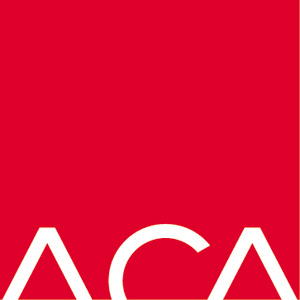HR changes for FY2026

From rising superannuation contributions to expanded paid parental leave, several important changes have been in effect since 1 July 2025, with others introduced over the past year now impossible to ignore. This FY26 HR Playbook from Merilyn Speiser at Catalina Consultants is a timely reminder of eight critical updates for every Australian practice.
SUPERANNUATION
From 1 July, the Superannuation Guarantee (SGC) increased from 11.5% to 12%. But for the first time, the maximum super salary base has decreased, from $262,500 to $250,000. That means the annual SGC cap is now $30,000 (12% of $250,000).
The concessional contributions cap also remains unchanged at $30,000, bringing it into alignment with the SGC cap.
Why it matters
The change to the SGC contribution increases payroll costs, affects total remuneration and “plus super” contracts and introduces a trap. You may now breach the concessional cap with standard SGC alone.
What to do
- Review high earners’ contracts carefully.
- Check for total-rem structures that relied on the higher SGC base.
- Flag salary-sacrifice arrangements that could unintentionally exceed the cap.
MINIMUM WAGE INCREASES 3.5%
The National Minimum Wage rises to $24.95/hour or $948.70/week, effective from 1 July 2025. Updated pay rates and Awards have now been published.
Why it matters
Modern award rates move in lockstep, and casual rates must include the 25% loading, bringing the minimum casual hourly rate to $31.19. See the updated pay rates for the Architects Award.
What to do
- Update payroll systems with new award rates.
- Re-check student and graduate rates against the latest schedules.
- Communicate the increase to impacted staff.
THRESHOLD FOR UNFAIR DISMISSAL CLAIMS RISES
The Fair Work Commission has confirmed that the high-income threshold for unfair dismissal claims rises to $183,100 from 1 July (up from $175,000).
Why it matters
Employees earning above the threshold can’t file unfair dismissal claims (but they can still bring unlawful termination ones). However, general protections still apply and awards may still cover them.
What to do
- Identify anyone close to the threshold.
- Review upcoming salary increases that may push someone over.
REDUNDANCY TAX-FREE THRESHOLD INCREASES
The ATO’s tax-free redundancy cap increased to $13,100 + $6,552 per full year of service from 1 July 2025.
Why it matters
After-tax severance entitlements may shift, and old calculators may be using outdated numbers.
What to do
- Update redundancy modelling tools and termination letters.
- Check your treatment of long-tenured staff and top-tier packages.
PAID PARENTAL LEAVES EXPANDS
From 1 July 2025, the Federal Government’s Paid Parental Leave scheme increases to 24 weeks (120 days) for eligible births or adoptions.
Why it matters
This affects employer top-up policies, return-to-work plans and your long-term leave liability.
What to do
- Update your leave request forms and payroll settings.
- Communicate entitlements clearly to expecting parents.
- Review the interaction between government and employer-paid leave.
RIGHT TO DISCONNECT EXTENDS
The Right to Disconnect, already in force for large employers, takes effect for small businesses (<15 employees) on 26 August 2025.
See the Right to Disconnect explainer by ACA IR advisor, Fair Work Lawyers.
Why it matters
Employees will have the legal right to ignore unreasonable out-of-hours contact. Failure to comply can trigger Fair Work orders.
What to do
- Draft and publish a workplace disconnection policy.
- Train managers on respectful contact outside hours.
- Review rostering, stand-by and on-call expectations.
SAME JOB, SAME PAY
This reform took effect on 1 November 2024, but FY26 is when many businesses will feel the full impact. Labour-hire workers must now receive equal pay to host-site employees performing equivalent roles.
Why it matters
Labour-hire and contracting costs may rise. Misalignment exposes employers to penalties and reputational risk.
What to do
- Map affected labour-hire arrangements across all departments.
- Review enterprise agreements and agency contracts for compliance.
- Brief procurement and finance teams on project cost impacts.
STAGE 3 TAX CUTS ARE LIVE
The restructured Stage 3 tax cuts came into effect 1 July 2024, with updated PAYG withholding tables issued for FY2025 that remain current into FY2026. (Although a new tax cut is coming next financial year).
Why it matters
If your payroll system hasn’t updated properly, employees may be over- or under-withheld, triggering ATO penalties and employee frustration.
What to do
- Confirm payroll software is using the latest tax tables.
- Reassure staff by communicating expected net pay impacts.
- Run a spot audit across recent pay runs to double-check.
ARE YOU ON TOP OF FY2026 CHANGES?
As we head further into the new financial year, there are plenty of HR-related changes that businesses need to be on top of.
If you have any questions regarding the changes or are keen to find out how they could impact you or your business, ask a question at the ACA HR advisory or speak with one of the Catalina Consultant team members today.
Merilyn Speiser is Principal Consultant at Catalina Consultants and the ACA’s HR Advisor. ACA member practices are eligible for a 15-minute consultation each year on a range of matters related to people management and workplace culture. To access this 15-minute consultation, head to the HR Advisory.
This article first appeared on the Catalina Consulting website, and is republished here with permission.
